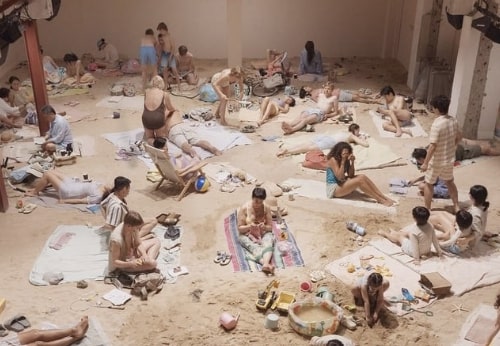
How Did Slaves Live in the Joseon Dynasty?
Have you ever imagined living in the 18th century when there were social classes, like nobles and slaves?

Joseon Dynasty (1392-1910) was comprised of four major social classes.
- Yang-ban : The highest, well-educated, scholarly social class
- Jung-in : The upper middle class
- Sang-min : The commoners
- Cheon-min : The “vulgar” commoners, the lowest of all classes

Treasure No. 527 Kim Hongdo’s “Rice Threshing” : An 18th century satirical drawing that exquisitely compared the appearance of a nobleman being lazy with that of working slaves.
Today, we would like to talk about what “Cheon-min” is and how they lived.
Widely known 8 Types of Cheon-min :
Slaves, monks, shamans, performers, pallbearers, prostitutes, smiths (mental workers), butchers.
Cheon-mins were not treated as a human being, but rather a tool. These professions were considered “unclean” and had to live separate from the high class or live under the high class people as the property of their owners.

Among all, slaves (aka “노비 Nobi”) hold the majority of Cheon-min.
- The social class of slaves was inherited. One critical law related to social heredity was ‘If either of the parents is a slave, the child becomes a slave.’ It meant if a slave got married to a person from other social class, a child automatically becomes a slave.
- This law of social heredity had caused the number of slaves to continuously increase. Historians estimated that the proportion of slaves was about 30 to 40% of the total population in the early 17th century of Joseon Dynasty.
- Slaves was treated as a property and was subject to sale, inheritance, and gift.

A slave document in 1896 that a commoner named Park Jong-sook had to sell himself and his wife and concubine as slaves due to debt. The hand was drawn as evidence.
What did slaves (Nobi) do?
Slaves provided either intangible or tangible service.
Those who provided intangible service lived at the owner’s house and engaged in various labor, such as domestic work (cleaning, washing, cooking, etc.) and production work (cropping, weaving, silk farming). The necessities of life (food, clothing, shelter) were provided to slaves in return.
Those who provided tangible service lived in their own house with family, away from their owner. Once a year, they had to pay tributes to the owner. Tributes varied from cotton cloth to rice, beans, fish and firewoods.
???? Questions to Dear UoH Friends ????
-What was your country’s social class like back in the days?



